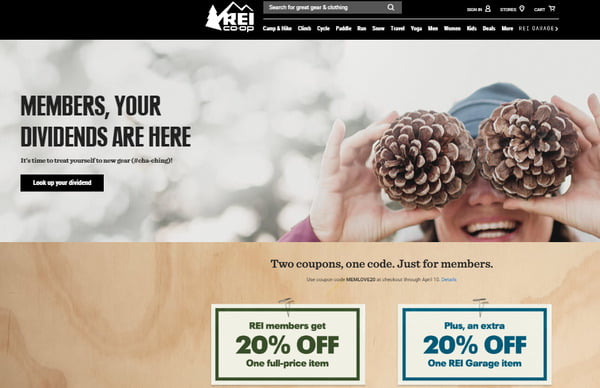
What does omnichannel marketing automation consist of? From on-site navigation, to the store, through email and Facebook, what are the possible scenarios for a customer experience driven by marketing automation? Let’s look at some examples.
On-site navigation. Personalization based on user recognition
On-site navigation is not always the first touch point. As marketers, we have already internalized concepts such as the zero moment of truth and the importance of digital in managing contact at the brand experience, information search, price comparison stage.However, it is now clear that buying dynamics are varied and range across channels, so much so that we can speak of both R.O.P.O (Reserach Online Purchase Off line) and T.O.P.O (Try Offline Purchase On line). The truth is that people’s experience today has reached a remarkable level of complexity: mobile Internet, interactions mediated by technological devices, but also many experiences in physical stores. Tracking all of this is, without the right tools, an extremely complex task.This is an example of how Rei.com, by recognizing you as an active member of its community, is able to calibrate its promotional proposal in a targeted way.

How to do it. Information needs to be merged into a single id the user registered on the site, along with a loyalty card to be used in the store. The marketing automation solution then takes care of tracking in one Big Data system all this information, from different sources, to propose personalized products based on purchase history, as well as contextual browsing
Email Retargeting. Behavior-based win-back strategies
When people talk about e-mail retargeting, they immediately think of abandoned cart retrieval in e-commerce: in reality, retargeting can also be done by repurposing content that you have seen on the site, and why not even with an invitation to go to the store. There are plenty of examples that can be given; you’ve undoubtedly come across them already. The important thing is not to just look at email behavior (opens and clicks) to assess a user’sengagement. In mixed e-commerce and retail business models, those who do not open communications have not necessarily stopped buying. He or she simply prefers other channels and dislikes email while remaining a brand enthusiast. So be careful to always have an omnichannel view, and to track all interactions: a user who does not open an e-mail may have recently gone to one of your stores!
Below we show an example of Bonobos, a company that has been much talked about not only for the creativity of its communication, but also for its very innovative bricks and mortar business model.

How is it done? Marketing automation records your level of interaction with the brand, cross-referencing email opens, site visits, and purchases online as well as in-store.
Facebook Audience on Hot Targets.
Proprietary information is the starting point for direct communication on social networks. With custom audiences today we can identify “hot” user segments (because they have left us information such as an email or phone number) and track them on other platforms. Thanks to custom audiences it is possible to distribute specific content by single target (typically sales for example with retargeting on a viewed/abandoned product). Thanks to marketing automation, however, we can imagine more sophisticated scenarios based on segmentation, for example by dividing audiences into regular vs. occasional customers. At that point marketing automation can also take care of personalizing content and distributing it on sponsored formats.
This is made possible byartificial intelligence that selects what to propose instead of us, preventing us from having to test hypotheses based only on our experience.

How to do it. Marketing automation creates segments that can be automatically transferred to social networks, thus becoming personalized audiences. Algorithms will then intervene to define which products to highlight.
In-store visit and customized discounts
We talked about recognition both in the digital channel, but it also applies to the physical channel. We would all like to be recognized all the time, even in stores: walking in and being offered personalized discounts based on our profile by the clerk would certainly be a memorable experience. One of the certainly most interesting examples, though often cited, is Starbucks, among the best omnichannel players in the world. The choice is to create a unique experience across channels, allowing the user to be recognized no matter where they are. The rewarding system constantly updates online or directly at the checkout at the time of payment (with the loyalty card or app). This allows discounts and points to be used at any time.

How is it done? the automation platform tracks, again, all online and offline purchases, dynamically adjusting your loyalty program directly at checkout or on the app.




